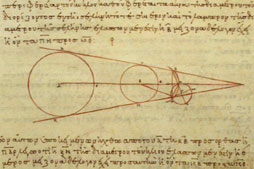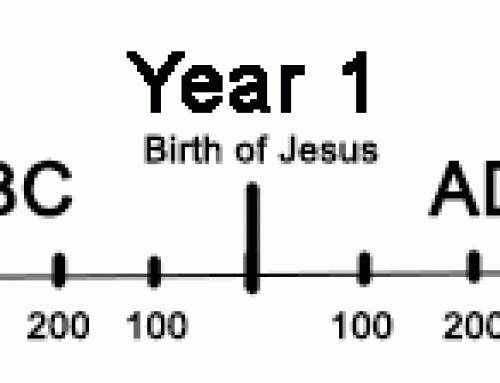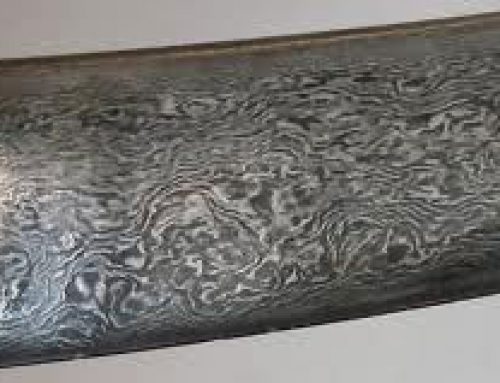
Greek astronomy: Eclipse of the sun
Astronomy before the Greeks
The art of astronomy was already very advanced before the Greeks began to interest themselves in the stars. The Egyptians and especially the Mesopotamians had done a lot of scientific observations and had named the constellations of stars, and many individual stars.
Early African astronomy
Egyptian astronomy
Mesopotamian astronomy
History of astronomy
Greek science
All our ancient Greece articles
Many of these scientists believed in astrology, the study of the stars in order to predict future events, and to interpret people’s characters. The stars don’t really predict the future. But these early astronomers also figured out a lot about how the stars and planets moved around the sky.
The Greeks add geometry

The Moon orbiting Earth (taken from space) – NASA
The Greek contribution to astronomy was not so much in observation as it was in applying logical thinking and geometry to these observations. That is how Greek scientists figured out that the earth went around the sun, calculated the size of the earth, and understood that the moon went around the earth.
Greek mathematics
Thales: the earth is round
Anaxagoras and eclipses
Aristarchus: the earth goes around the sun
Some famous Greek astronomers were Thales, who figured out that the earth was round, Anaxagoras, who figured out what caused eclipses, and Aristarchus, who figured out that the earth went around the sun.
Wait, the earth goes around the sun?
But at this point Greek astronomy ran into a big problem. Many Greek astronomers pointed out that if Aristarchus was right, and the earth went around the sun, then the earth was also moving relative to the stars.
More about the stars
What is a light-year?
What is parallax?
If so, you should be able to observe parallax when you looked at the stars. Or, the stars had to be trillions of miles away, so far that you couldn’t observe the parallax. When Greek astronomers like Hipparchus looked at the stars, they couldn’t see any parallax. Nobody can see it, with just their eyes.
Archimedes and Greek astronomy
No parallax meant one of two things. Either the sun was really going around the earth, or that the stars were so far away that you couldn’t observe the parallax.
Who was Archimedes?
More about space

A copy of Aristarchus’ work on parchment from Constantinople, about 950 AD, showing the relative sizes of the sun, the Earth, and the moon
It seemed unlikely that anything could be trillions of miles away from anything else, but Aristarchus wasn’t alone in thinking so – Archimedes followed him in agreeing that the earth went around the sun. Archimedes estimated that the universe was at least two light-years across (it’s really almost 14 billion light-years across).
Astronomy, lenses, and light
Greek scientists also made practical contributions to astronomy. Before 400 BC, as Aristophanes tells us, Greek carvers were making transparent crystal lenses that could focus sunlight enough to melt wax. Using these lenses, Archimedes and other Greek scientists learned a lot about light and refraction and lenses that helped later astronomers develop telescopes.
Learn by doing: the earth-moon-sun dance
Setting things on fire with lenses
Egyptian astronomy in the Roman period
Bibliography and further reading about Greek astronomy:
The Librarian Who Measured the Earth, by Kathryn Lasky (1994). An account of the life and work of Eratosthenes, who figured out the circumference of the earth. Explains how he did it. Easy reading.
The Shining Stars: Greek Legends of the Zodiac, by Ghislaine Vautier, Kenneth McLeish and Jacqueline Bezencon (reprinted 1989). A Greek myth for each star sign, with drawings of the constellations so you can find them in the sky. Easy reading.
Greek Astronomy, by Thomas Heath (1932). A collection of what ancient Greek writers had to say about astronomy, in their own words, with a long introduction. For adults.
The History & Practice of Ancient Astronomy, by James Evans (1998). Includes both the history, and directions to actually re-do the experiments that ancient Greek astronomers used to figure out their conclusions. For adults.
Greek Science After Aristotle, by G. E. R. Lloyd (1975).





